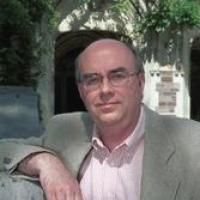Optimized, unequal pulse spacing in multiple echo sequences improves refocusing in magnetic resonance.
Date
2009-11-28
Journal Title
Journal ISSN
Volume Title
Repository Usage Stats
views
downloads
Citation Stats
Abstract
A recent quantum computing paper (G. S. Uhrig, Phys. Rev. Lett. 98, 100504 (2007)) analytically derived optimal pulse spacings for a multiple spin echo sequence designed to remove decoherence in a two-level system coupled to a bath. The spacings in what has been called a "Uhrig dynamic decoupling (UDD) sequence" differ dramatically from the conventional, equal pulse spacing of a Carr-Purcell-Meiboom-Gill (CPMG) multiple spin echo sequence. The UDD sequence was derived for a model that is unrelated to magnetic resonance, but was recently shown theoretically to be more general. Here we show that the UDD sequence has theoretical advantages for magnetic resonance imaging of structured materials such as tissue, where diffusion in compartmentalized and microstructured environments leads to fluctuating fields on a range of different time scales. We also show experimentally, both in excised tissue and in a live mouse tumor model, that optimal UDD sequences produce different T(2)-weighted contrast than do CPMG sequences with the same number of pulses and total delay, with substantial enhancements in most regions. This permits improved characterization of low-frequency spectral density functions in a wide range of applications.
Type
Department
Description
Provenance
Citation
Permalink
Published Version (Please cite this version)
Publication Info
Jenista, Elizabeth R, Ashley M Stokes, Rosa Tamara Branca and Warren S Warren (2009). Optimized, unequal pulse spacing in multiple echo sequences improves refocusing in magnetic resonance. J Chem Phys, 131(20). p. 204510. 10.1063/1.3263196 Retrieved from https://hdl.handle.net/10161/3315.
This is constructed from limited available data and may be imprecise. To cite this article, please review & use the official citation provided by the journal.
Collections
Scholars@Duke

Warren S. Warren
Our work focuses on the design and application of what might best be called novel pulsed techniques, using controlled radiation fields to alter dynamics. The heart of the work is chemical physics, and most of what we do is ultrafast laser spectroscopy or nuclear magnetic resonance. It generally involves an intimate mixture of theory and experiment: recent publications are roughly an equal mix of pencil- and-paper theory, computer calculations with our workstations, and experiments. Collaborations also play an important role, particularly for medical applications.
Unless otherwise indicated, scholarly articles published by Duke faculty members are made available here with a CC-BY-NC (Creative Commons Attribution Non-Commercial) license, as enabled by the Duke Open Access Policy. If you wish to use the materials in ways not already permitted under CC-BY-NC, please consult the copyright owner. Other materials are made available here through the author’s grant of a non-exclusive license to make their work openly accessible.
